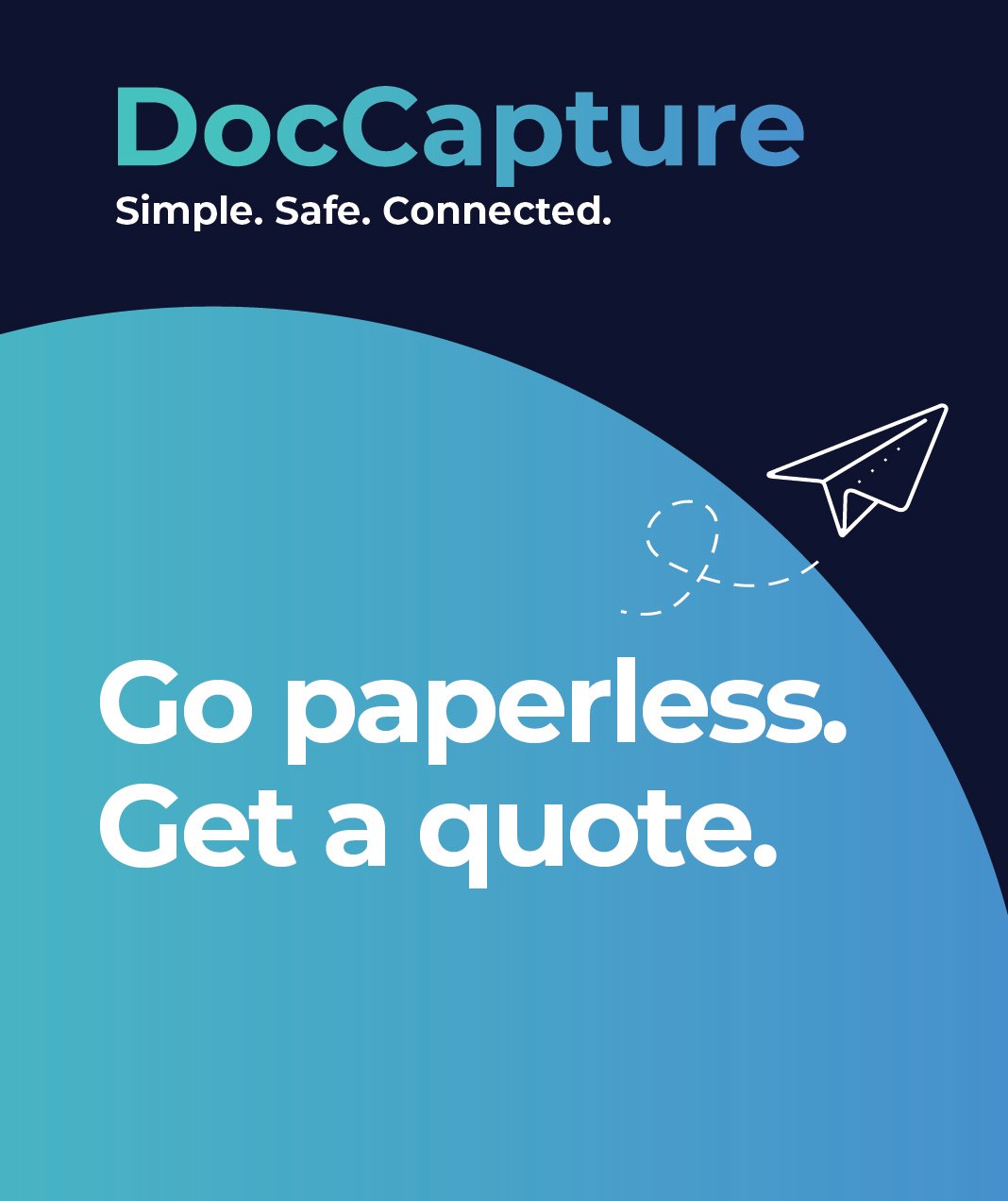Going Paperless: A Cost-Saving Strategy for HR Departments
Table of contents
Human Resources departments are often buried in paperwork—employee files, performance reviews, benefits forms, compliance documents, and more. While many organizations have modernized other business functions, HR remains surprisingly paper-heavy, creating hidden inefficiencies and avoidable expenses. From high storage costs to time-consuming manual processes, outdated document handling is holding HR teams back.
Going paperless in HR departments isn’t just a tech trend—it’s a strategic move toward greater operational efficiency, cost control, and legal compliance. By digitizing employee records and streamlining document workflows, HR professionals can reclaim valuable time, reduce risks, and better serve their workforce. In this article, we’ll break down the key financial and operational benefits of transitioning to a digital HR environment, and how DocCapture’s secure HR document scanning solutions make it all possible.
The Cost Burden of Paper in HR
Many HR departments underestimate just how expensive paper-based processes really are. The costs go far beyond printer ink and filing cabinets—paper records create a compounding drain on budgets, time, and productivity.
Physical Storage Space Isn't Free
Filing cabinets, storage rooms, and even offsite warehouses consume valuable real estate. For growing organizations, this space could be better utilized for revenue-generating purposes or employee workspaces. In some cases, maintaining physical records even leads to additional rental or facility costs.
Printing and Supply Expenses Add Up
Printers, toner, copiers, and paper supplies may seem minor individually, but they accumulate quickly. Routine HR activities like onboarding, evaluations, and benefits enrollment can generate thousands of printed pages per year. Going digital significantly reduces or eliminates these recurring expenses.
Manual Labor Costs Are Hidden but High
Staff time spent filing, retrieving, copying, or searching for documents is rarely tracked—but it’s a major cost. Manual document management slows down core HR functions and increases the chance of errors. Over time, this inefficiency translates to reduced service levels and higher labor costs.
By transitioning to digital employee records with a service like HR Document Scanning, HR teams can minimize physical file maintenance and free up both budget and bandwidth for more strategic work.
Going Paperless = Compliance + Security
For HR leaders, maintaining regulatory compliance and safeguarding sensitive employee data are non-negotiable responsibilities. Unfortunately, paper-based systems make these tasks harder—not easier. Going paperless in HR departments dramatically improves both compliance and data protection.
Simplified Compliance with Regulations
From GDPR to HIPAA to federal labor laws, HR teams must store and handle employee information according to strict guidelines. Employee record digitization enables organizations to implement automated retention schedules, version control, and secure audit trails. Digital systems make it easier to demonstrate compliance during audits and reduce the risk of penalties due to misplaced or incomplete files.
You can explore more about compliance-related benefits in our resource: Digital Transformation in HR.
Enhanced Data Security and Controlled Access
Paper documents are vulnerable to theft, loss, and unauthorized access. Digitizing files allows HR to apply access controls, encryption, and secure backups—features that paper simply can't provide. By centralizing records in a secure document management system, HR can ensure only authorized personnel can view or modify sensitive data.
Ideal for Risk-Averse Environments
In industries like healthcare, finance, and government, risk mitigation is critical. HR digital transformation through secure scanning solutions not only meets but exceeds the security expectations of compliance-driven HR teams.
To learn how scanning specifically supports secure HR practices, check out our overview on HR Document Scanning.
Operational Efficiency Gains
In fast-paced organizations, HR teams can’t afford to waste time tracking down paper files or duplicating paperwork. Going paperless in HR departments empowers teams to move faster, respond more accurately, and focus on value-added tasks rather than admin-heavy processes.
Instant Access to Employee Records
Digitized documents can be retrieved with just a few clicks. Whether it's for onboarding, benefits administration, or resolving workplace issues, having searchable files on demand saves hours of back-and-forth. This is especially valuable for HR teams supporting multiple locations or remote employees.
Streamlined Workflows and Audits
When HR files are digital, common processes—such as performance reviews, policy acknowledgments, and compliance checks—can be automated or at least dramatically simplified. This not only speeds up workflows but also reduces the likelihood of errors or missed deadlines. Digital records also make audits far less stressful by ensuring that all documentation is up-to-date and easily accessible.
Improved Onboarding and Performance Tracking
Going digital enhances the entire employee lifecycle. From new hire paperwork to performance documentation, digital solutions help HR manage each phase efficiently. It also promotes consistency, helping ensure every employee experience is equally thorough and compliant.
Explore the broader business case in our guide on Digital Transformation in HR.
Overcoming Objections to Going Paperless
Despite the clear benefits, some HR teams hesitate to go digital due to concerns around cost, system integration, or staff readiness. Let’s address these common objections and show why going paperless in HR departments is a strategic move—not a risky one.
“Is It Really Cost-Effective?”
While the upfront investment in HR document scanning and digital infrastructure may seem steep, the long-term savings are significant. Organizations reduce supply costs, reclaim office space, and spend less on labor-intensive tasks. Over time, the ROI becomes clear through lower overhead and higher productivity.
For a deeper look into how scanning saves money, visit our dedicated page on HR Document Scanning.
“Will It Work With Our HR Systems?”
Modern document scanning solutions are built to integrate seamlessly with most HRIS and ERP platforms. Digital files can be easily linked to employee profiles, shared securely across departments, and updated in real-time. DocCapture’s services are designed to ensure compatibility and flexibility across existing systems.
“How Will We Get Our Team On Board?”
Change management is a common challenge—but it’s manageable with the right approach. Training, phased rollouts, and clear communication can ease the transition. Plus, many HR professionals quickly embrace the switch once they experience the convenience and efficiency of digital records firsthand.
Explore tips and strategies for successful implementation in this post: How to Become an HR Rockstar by Going Paperless.
Conclusion
From reducing operational costs to ensuring airtight compliance and streamlining everyday tasks, the benefits of going paperless in HR departments are both immediate and long-lasting. Digitizing employee files isn’t just about eliminating paper—it’s about transforming how HR works.
With solutions like HR document scanning, your team can work smarter, safeguard sensitive information, and elevate the employee experience—all while staying compliant and within budget.
Learn how DocCapture can help your HR team go paperless today. Fill out our "Get a Quote" form to start your digital transformation or schedule a free consultation.
Share this
You May Also Like
These Related Stories

Improving Student Record Management with Document Scanning

Achieve Regulatory Compliance with Advanced Digital Mailroom Services

